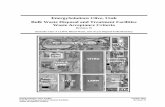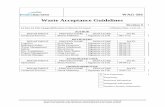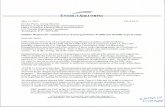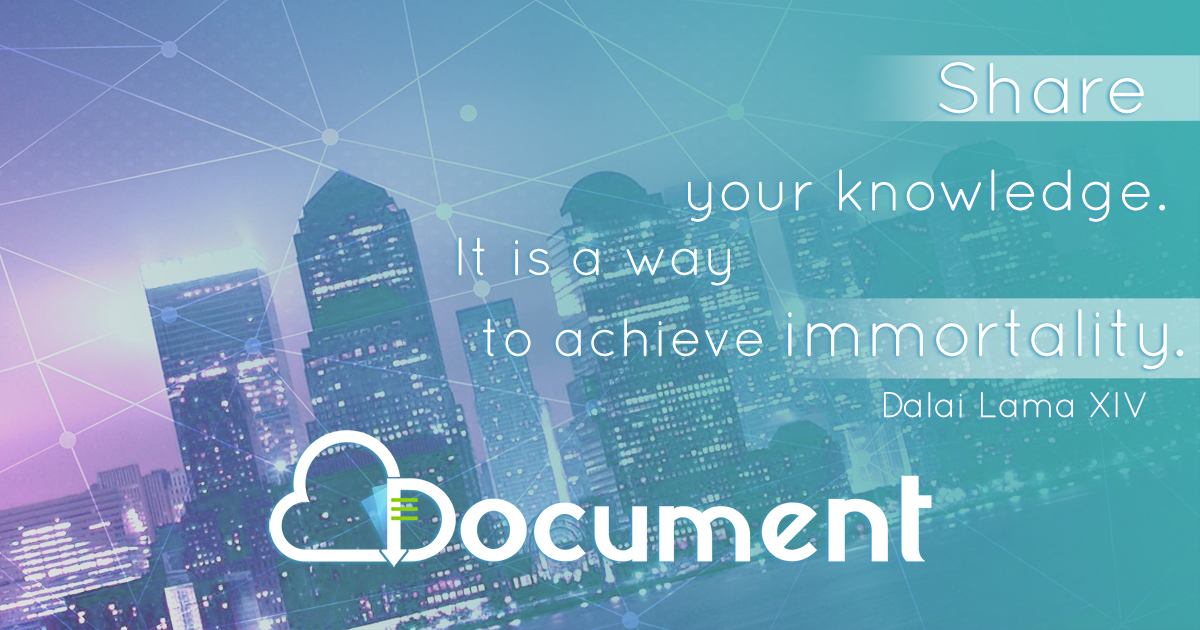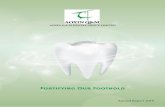Aurora Sinai Persuasion Campaign: Gaining a Foothold in Social Media
INCLUDES 2016 ANNUAL REPORT IMPACT and Stevie Eller Foundation EnergySolutions Feld Family...
Transcript of INCLUDES 2016 ANNUAL REPORT IMPACT and Stevie Eller Foundation EnergySolutions Feld Family...
It’s now open! The Lassonde Entrepreneur Institute at the University of Utah opened its doors in August to the $45 million Lassonde Studios, a one-of-a-kind facility where students can live, create new products, and launch companies. A dedication and open house was held on Thursday, September 22. Special guests included donors, university leadership, and many of the 400 students who are living, creating, and launching there.
A nationally ranked division of the David Eccles School of Business, the Lassonde Institute announced the building project in April 2014 and broke ground that October. During construction, Lassonde Studios received worldwide attention and was featured in publications such as The New York Times, Fast Company and Bloomberg. “The University of Utah is already among the best schools in the country for entrepreneurship,” says Taylor Randall, dean of the David Eccles School of Business. “Lassonde Studios will help us reach the next level.”
The building is about 160,000 square feet on five floors. The first floor is a 20,000-square-foot innovation space, workshop, and café open to all U students. That floor includes work-benches, group co-working areas, 3-D printers, a laser cutter, and power tools. Above are four floors of student housing where the 400 students live, collaborate, and launch new ideas.
Lassonde Studios is made possible through the vision and generosity of Pierre Lassonde, a world-renowned gold in-vestor, founder of the Franco-Nevada Corporation, and U alumnus who has pledged $25 million to support the Las-sonde Studios and related programs. “We want to achieve something that has never been done before. We want to create a community of entrepreneurs unlike anything anywhere else,” says Lassonde. “The Lassonde Studios will help make this possible by providing all the space and tools students need to do amazing things.”
Many other people and organizations have made the Lassonde Studios possible. Partners include University of Utah Housing & Residential Education, Cannon Design, EDA Architects, and Gramoll Construction. Other major donors, in addition to Lassonde, include David Neeleman and the Larry H. & Gail Miller Family Foundation. Neele-man is a U alum and commercial airline entrepreneur, and the first floor is named Neeleman Hangar in his honor. The restaurant is named the Miller Café to recognize the gener-ous gift from the Miller Family Foundation.
Learn more about the Lassonde Studios online at www.lassonde.utah.edu/studios.
The new copper cladding on the exterior of the Lassonde Studios will change color to a green patina as it weathers over time, mirroring the vibrant, evolving activities taking place inside.
Lassonde Studios Blends Residential and Makerspace into One
T H E U N I V E R S I T Y O F U T A H D E V E L O P M E N T N E W S L E T T E R
IMPACTAUTUMN
2016
INCLUDES 2016 ANNUAL REPORT
- 2 -
Recent Major Gifts
We thank the following supporters for their generous gifts received between
July 1, 2016, and September 30, 2016.
The ALSAM Foundation
American Express Public Affairs
ARCS Foundation Inc., Utah Chapter
Art Works For Kids
Arthritis Foundation
Ruth Eleanor Bamberger and John Ernest Bamberger Memorial Foundation
John I. and Toni F. Bloomberg Foundation
R. Harold Burton Foundation
Cambia Health Solutions
Robert S. and Charlotte J. Campbell
Chevron
Shaunna J. and Rick Clark
Cooper-Hansen Foundation
Crockett Group, LC
David E. Cumming Family Foundation
Nicola G. and Stephen L. Dahl
Lawrence T. and Janet T. Dee Foundation
Spencer F. and Cleone P. Eccles Family Foundation
Willard L. Eccles Charitable Foundation
Karl and Stevie Eller Foundation
EnergySolutions
Feld Family Foundation
Foothold
Robert C. and Lynette N. Gay
Lowell and Sheila G. Gill
Val A. and Edith D. Green Foundation, Inc.
Drew and Theresa Hall
The Richard K. and Shirley S. Hemingway Foundation
The Jackson Howard Foundation
Huntsman Cancer Foundation
Huntsman International LLC
Intel Corporation
Intermountain Healthcare
Intermountain Power Agency
Iveena Delivery Systems, Inc
Greg L. and Anna B. Jackson
JMP Foundation
Emma Eccles Jones Foundation
Kennecott Utah Copper Corporation
Gloria A. Larson Trust
Frederick Q. Lawson Foundation
Janet Q. Lawson Foundation
Marion B. and Steven M. Mahas
Margot Shott A Lifetime of Giving to the Arts
The arts were important to Margot Ludlow Shott. During her life, she regularly attended performances of the Utah Opera, Ballet West,
and Pioneer Theatre Company where she also served as a member of its board. She made fashion her career, even assisting the Utah Museum of Fine Arts with a fashion exhibit in 2005. Margot lived a full life enriched by the arts. And when planning her will, she made heartfelt gifts of jewelry, clothes, and money to the art charities she loved.
Born in New York City in 1931, it was Margot’s mother who first cultivated her passion for art and couture. As a young woman, she studied advertising at Columbia University before working for Catalina Swimwear in California. When she moved to Utah, Margot was a fashion coordinator for the depart-ment store Weinstocks. She later met and married Allen Shott, a commercial real-estate broker, who died in 1996.
Margot built a special relationship with the arts com-munity at the U, particularly the Utah Museum of Fine Arts, Pioneer Theatre Company, and the College of Fine Arts, and made annual gifts to them for 31 years. In addition to loving art, she also valued the arts education provided by the university. She was especial-ly fond of Pioneer Theatre Company, where she had been a patron since the theatre was built in 1962. Her relationship with the theatre went beyond just being a
board member; she often attended re-hearsals and hosted cast parties in her home.
When Margot passed away in 2015 at the age of 83, the University of Utah learned that she had thoughtfully included gifts to the museum, the theatre, and the College of Fine Arts in her will. “She was not just a donor—she was an ardent lover of the arts,” says Chris Lino, managing director of Pioneer Theatre, who knew Margot for 25 years. “Art filled her house, it filled her life, and she communicated her pas-sion for the arts every day she was alive. It’s not surpris-ing that she continued her support even after she passed away.” The arts were essential in her life and she made it her legacy. Chris adds, “Everyone who knew Margot would say that she was the living embodiment of the adage that ‘we make a living by what we get; we make a life by what we give.’”
Margot Shott chats with Chris Lino, managing director of Pioneer Theatre Company, during the Bravo! Award Gala at Rice-Eccles Stadium on May 1, 2015, honoring Paul M. Durham.
“Art filled her house,
it filled her life, and
she communicated
her passion for
the arts every day
she was alive. It’s
not surprising that
she continued her
support even after
she passed away.”
- 3 -Learn more at giving.utah.edu.
As a child, Steve Denkers loved to lie in the grass, look at the stars, and count the constellations. And after watching the moon landing and learning about NASA’s space program, he was hooked. “I’ve
always been fascinated with astronomy,” he says. Today, Steve is executive director of his maternal grandfather’s foundation, the Willard L. Eccles Foundation, dedicated supporters of astronomy at the U.
It started in early 2000 when the Willard Eccles Foundation, with a grow-ing interest in the U’s fledgling astronomy program, gave a financial gift to enhance the program’s outreach to schools in the Salt Lake area and to renovate the campus observatory atop the South Physics Building. The ensuing weekly Wednesday night star parties—hosted by astronomy stu-dents, offered year round, and open to all—continue to this day.
Inspired to do more, the foundation became the major donor for the creation of the university’s Willard Eccles Observatory and 32-inch research telescope, located at Frisco Peak, near Milford, Utah. Completed in 2009, the telescope can be operated remotely from campus, and the observatory is used as a classroom for the U’s astrono-my students as well as for other students in Utah. “Frisco Peak is one of the most fabulous remaining dark areas in the United States from which to view the universe,” says Wayne Springer, a pro-fessor of astronomy at the U and one of the key people involved in the project.
These two initiatives—the upgraded public outreach program and the new observatory—created excitement and incentive among donors, administra-tors, and faculty to pursue an op-portunity to become involved in the exciting research opportunities afforded
by the Sloan Digital Sky Survey, a long term, international effort to map the heavens. But hefty membership fees meant the U would need to raise funds to cover the expense. Once again, the Willard Eccles Foundation stepped up and suggested a challenge grant—the foundation would pay half the membership fees if the university would raise the other half. The challenge was successful and in 2008, the U joined SDSS-III (phase III) and became a major member of the survey and the repository for the Sloan Survey data. Today, the U remains involved in the work of SDSS-IV, a critical extension of the success achieved by the U’s astronomy program as a participant in SDSS-III.
The Willard Eccles Foundation’s gifts to the U’s astronomy program have led to multiple, high-profile results in research, education, outreach, and external funding, attracting more than $4 million in grants for faculty members doing research for the survey.
“We’ve been proud of our involvement and are eager to continue our sup-port for astronomy at the U,” says Steve.
The astronomy program is just one of many areas on campus that benefits from the Willard L. Eccles Foundation’s gener-osity. Additional gifts support the Natural History Museum of Utah, the College of Nursing, and the Honors College. The foundation also provides funds for post-doctoral fellowships to support promising scholars, critically important in attracting the best and brightest students to the U.
The university appreciates the loyal sup-port of the Willard L. Eccles Foundation and looks forward to continuing the partnership well into the future. Together, we know the sky’s the limit!
Willard L. Eccles Foundation Shoots for the Stars
The Willard L. Eccles Observatory, located in the San Francisco Mountains, opened in 2010. The site is approximately halfway between the bright lights of Salt Lake City and Las Vegas in one of the darkest sky areas in the country.
Kyle Dawson, professor of astronomy, examines optical fibers at the Apache Point Observatory in New Mexico, site of the Sloan Digital Sky Survey.
- 4 -
Major Gifts continued
2016 ANNUAL REPORT
Dear Alumni and Friends,
Another remarkable year has come and gone, and the University of Utah continues to move forward in historic ways. On behalf of our faculty, staff, students, and administrators, thank you for your support. During this past fiscal year, private gifts to the U totaled $209.7 million. Because of your generosity we’ve enriched our students’ education, advanced our research, and increased our service to the region.
We have created an annual report website where you will see examples of how your gifts are helping the university prepare students for meaningful lives as visionary leaders and caring citizens in the 21st century; address society’s most urgent challenges through cutting-edge research; and improve the qual-ity of life in our state with world-class medical care, innovative arts and cultural venues, and exciting athletics programs.
Gifts to scholarships, fellowships, and endowed faculty positions have allowed us to recruit the best students while attracting and retain-ing outstanding faculty. And that’s not all. Your contributions are improving the landscape of our campus with the addition this past year of two new buildings—the S.J. Quinney College of Law and the Jon M. & Karen Huntsman Basketball Facility.
We are exceedingly fortunate to have such generous donors. The growth and success we are experiencing is because of you. I encourage you to take a few minutes to review the online annual report at giving.utah.edu/annual-report. I hope you’ll agree that we are fulfilling our pledge to use your support thoughtfully and wisely.
Many thanks,
David W. PershingPresident, The University of Utah
- 5 -
FACILITIESTwo new buildings were completed during fiscal 2016: The S.J. Quinney College of Law, an impressive six-story, accessible facility, awarded a prestigious LEED platinum designation by the U.S. Green Building Council was dedicated September 1, 2015; and the Jon M. & Karen Huntsman Basketball Facility, with unrivaled courts, locker rooms, and other amenities, opened October 1, 2015. In addition, renovation of the George Thomas Building into the Crocker Science Center began this fiscal year, and construction of the Lassande Studios, an innovative residential and makerspace in one, and renovation of the Enos A. Wall Mansion on South Temple, continued.
RESEARCHThe role of private support in research allows faculty to explore their most innovative ideas and move into exciting new fields of research. Private gifts support creative works that the government does not fund.
STUDENTSIncreases in student tuition make private scholarship support critical. Although the U is the least expensive of all the Pac 12 schools for in-state tuition, and second least expensive for out-of-state tuition, those costs are increasing and private funding helps to bridge that gap.
FACULTY SUPPORTEndowed chairs and professorships provide annual fund-ing so the professor can recruit a special student, attract an outstanding collaborator, or explore a new idea.
PUBLIC PROGRAMSCommunity programs—our museums, theaters, and gar-dens—are dependent on private support. It is key to their programming and outreach efforts and allows them to develop new educational initiatives and host exhibitions.
Your generosity makes an immeasurable difference to the experience of our students, faculty, staff, research-ers, and the broader community. Thank you.
WAYS TO GIVECash, Check, or Money Order/Credit CardPayroll Deduction (University of Utah employees)Securities
TYPES OF GIFTSMemorial and Honor GiftsCorporate Matching GiftsPlanned GiftsAnnual Gifts Gifts from Corporations and Foundations
Development OfficeThe University of Utah332 S. 1400 East, Suite 150Salt Lake City, Utah 84112-0300801-581-3720800-716-0377
www.giving.utah.edu
Learn more at giving.utah.edu.
Gift Total Summary by Fiscal Year, 1970–2016 (in millions)
1970-71
1971-72
1972-73
1973-74
1974-75
1975-76
1976-77
1977-78
1978-79
1979-80
1980-81
1981-82
1982-83
1983-84
1984-85
1985-86
1986-87
1987-88
1988-89
1989-90
1990-91
1991-92
1992-93
1993-94
1994-95
1995-96
1996-97
1997-98
1998-99
1999-00
2000-01
2001-02
2002-03
2003-04
2004-05
2005-06
2006-07
2007-08
2008-09
2009-10
2010-11
2011-12
2012-13
2013-14
$240
$220
$200
$180
$160
$140
$120
$100
$80
$60
$40
$20
$0
2014-15
2015-16
Research, $62.3
Scholarships/Fellowships, $21.8
Academic Support, $31.8
Other, $4.6
Libraries, $6.4
Buildings/Facilities, $25.3
Faculty/Sta� Suppor t, $11.4
Public Programs, $46.1
A L L O C A T I O N P U R P O S E (in millions)
G I F T S O U R C E S (in millions)
Gift Total $209.7 million Fiscal Year July 1, 2015 to June 30, 2016
Corporations, $62.9
Private Foundations, $65.5
Public Foundations, $18.7
Other Organizations, $19.0
Other, $.4
Alumni, $28.6
Other Individuals, $14.1
Faculty/Sta�, $0.9
2016 ANNUAL REPORT
ENDOWMENT POOL The University of Utah’s Endowment Pool has grown significantly during the past 19 years, from $98 million in 1996 to $761 million in 2016. Endowment earnings from investment returns and gifts continue to play a sizeable role in supporting the University’s mission of education, research, and community engagement.
From early support for critical research that often takes years to receive from federal sources, to scholarship support for single parents who would have no other possibility of attending a university, private support provides student scholarships, faculty research support, program endowments, and new facilities.
- 6 -
From Patient to A-Fib Research Advocate
Originally from New York, Susan Blair is a retired hospital administrator who, with her husband Arnold, now resides in Ketchum, Idaho. Susan
was considering a necessary heart-related procedure but was unsure where to have it. The procedure required a cardiovascular specialist not found near her home. Susan’s primary care provider had attended a presentation by Nassir Marrouche, a cardiac electrophysiology physician at the University of Utah, and impressed by what he heard, encouraged her to have a consult with Dr. Marrouche. After meeting with him and hearing about his research,
Susan decided to have the procedure performed at the U.
While at University Hospital, she was over-whelmed by the quality of care she received. From the valet to the provider, everyone was very profes-sional and courteous. Her experience exceeded anything she had seen during her career. “As a retired hospital ad-
ministrator from New York (Long Island Jewish Medical Center, now part of Northwell Health) I know what good hospital care looks like—or should look like,” says Susan. “The care I received at University of Utah Hospital was simply outstanding.”
In recognition of the quality experience, the Blairs decided to make a contribution toward Dr. Mar-rouche’s atrial fibrillation research. “My husband and I want to recognize the outstanding care ‘we’ received
by the entire staff at the hospital, and I mean everyone: the nurses who are part of Dr. Marrouche’s team, the Fellows, the cardiovascular department staff members, the MRI techs, the in-patient unit nurses, the parking valets… it was truly a unique experience.”
This is the first contribution by the Blairs to the Uni-versity of Utah. Their support will help Dr. Marrouche and his lab genetically sequence a large family who has a familial history of cardiac disease believed to be related to atrial fibrillation. Dr. Marrouche is hoping to find a genetic tie for the disease to provide better prevention and treatments for patients at risk for atrial fibrillation.
“I am so grateful for the support we have received,” says, Dr. Marrouche. “This will help develop precision medicine through better imaging and biometrics in the treatment of arrhythmias.”
The Blair contribution represents one of many by patients who give because of the quality experience they received at the U. For seven consecutive years, University of Utah Health Care has ranked among the nation’s top 10 academic medical centers in quality, safety, and accountability, according to annual studies by Vizient Inc., the largest member-driven health care performance company in the U.S. This year, University Hospital was selected as number one. The Mayo Clinic is the only other medical center consistently ranked in the top ten during the same time period.
As a result of her positive experience, Susan has become more than a contributor to the U—she has become an advocate for the U to her neighbors and friends, and the Blairs’s involvement and support will continue to benefit research, education, and patient care into the future.
Dr. Nassir Marrouche, cardiac electrophysiology physician at University Hospital, performs an ablation in the EP-MRI lab.
“This will help
develop precision
medicine through
better imaging
and biometrics in
the treatment of
arrhythmias.”
Marriott Daughters Foundation
McGillis Charitable Foundation
James R. and Nanette S. Michie Foundation
The Mark and Kathie Miller Foundation
Frederick A. and Lucy W. Moreton
O.C. Tanner Company
Oldcastle BuildingEnvelope
PacifiCorp
Leon E. and Shannon Paulos
James E. and Debra Pearl
Lori Poliski and Paul Gross
S.J. & Jessie E. Quinney Foundation
Harriet R. and W. E. Rasmussen
James Peter Read
Joseph and Evelyn Rosenblatt Charitable Fund
Tara G. and Adam Saucedo
Savage Companies
Shaw Family Foundation
Ron Simmons
Skaggs Foundation for Research
Sonata Biosciences, Inc.
The Sorenson Legacy Foundation
Deon Steckling
Sharon E. Steele-McGee Living Trust
Tanner LLC
Thoracic Surgery Foundation
United Way of Salt Lake
University Hospital Foundation
E. Russell and Phyllis J. Vetter
Wattis Dumke Foundation
Wells Fargo
Jack R. Wheatley
Debra Wisniewski
Woodbury Corporation
Zions Management Services Company
Major Gifts continued
- 7 -
U Alum Honors Father with AFROTC Scholarship
Last spring, Las Vegas dentist and University of Utah alum Daniel L. Orr II, who goes by Dan, contacted the U’s Development Office to explore the possibility of establishing a scholarship to honor his father, Daniel L. Orr, who had been a vital influence in his life and passed away in 2003. Dan’s father had served in the U.S. Air Force, primarily during the Korean War, so establishing a scholarship for an ROTC
student seemed appropriate. “My Dad was a brilliant individual—hard working and honest. A self-starter. Like my Mom, he encouraged me by example to dive into life head-first and then enjoy the ride, even the bumps. Although I’ve never been in the military, I so appreciate the service these men and women give our country and each of us as individuals,” says Dan.
Dan’s father completed U.S. Army Air Corps flight school in June 1945 and was awarded the WWII Victory Medal. Re-activated for the Korean War, he joined the 731st Bomb Squadron LNA (Light-Night Attack), based in Iwakuni, Japan, as a navigator/bombardier in the Douglas B-26 Invader. After completing 78 missions and navigating returns to base in part by the stars (GPSs were decades in the future), Lt. Orr was awarded a Distinguished Flying Cross, Bronze Star, Air Medal with 7 Oak Leaf Clusters, and was honorably discharged. The new scholarship arranged by his son will support students enrolled in the U.S. Air Force Reserve Officer Training Corps (AFROTC) commissioning program—targeting those mak-
ing significant efforts in charitable service.
In setting up the scholarship, Dan coordinated with Lt Col Angelique P. Brown, commander of AFROTC Det 850 and professor of aerospace studies. “She was amazing to work with,” he says. The Lt. Daniel L. Orr Scholarship was established and awarded for the first time this fall to AFROTC cadet Stephen Young, who will be commissioned as a second lieutenant in May 2017. As a cadet, he has participated in numerous community service events including delivering Thanksgiving turkeys to needy families, volunteering at the Humane Society, serving as a member of the color guard for numerous veterans’ events, and participating in community park cleanup efforts.
Dan chose to establish the scholarship at the U because he remembers when he was here as an anesthesiology resident enjoying the best academic experience he had ever had. “It was because of the melding of academia and clinical experiences,” he says. “My training at the U was the first time I was able to immediately apply what I was learning academically to clinical situations.” He received his master’s degree in anesthesiology from the U’s School of Medicine in 1979.
Today, Dan is director and professor of oral and maxillofacial surgery and anesthesiology at The UNLV School of Dental Medicine. He also is a member of the California Bar and the Ninth Circuit Court of Appeals. Through his generosity, the new Lt. Daniel L. Orr Scholarship honoring his father will provide support for an AFROTC cadet each semester. “The AFROTC scholarship is a logical way to remember my Dad and help future military leaders,” he says. The University of Utah thanks Dan Orr for his generosity. We are fortunate to have such a thoughtful gift from one of our alums.
This framed collage, honoring Daniel L. Orr, for whom the new scholarship is named, hangs in the AFROTC cadet lounge in the Annex.
Learn more at giving.utah.edu.
“The AFROTC
scholarship is a
logical way to
remember my Dad
and help future
military leaders.”
Dan Orr was born in Williams, AZ and his family subsequently settled in Whittier, CA. As a teenager, Dan was an Eagle Scout and an All-CIF water polo player for Whittier High’s CIF Championship team, graduating in 1944. He finished USAF Flight School in June 1945 and was awarded the WWII Victory Medal. Dan married Loletta Mary Bacon in January 1946 and enrolled at the University of Southern California, earning a B.S. in Engineering in June 1950. Re-activated for the Korean War, he joined the 731st Bomb Squadron LNA (Light-Night Attack) as a navigator/bombardier in the Douglas B-26 Invader. After completing 78 missions, he was awarded a Distinguished Flying Cross, Bronze Star, and Air Medal with 7 Oak Leaf Clusters flying out of Iwakuni, Japan before being honorably discharged. As a hydraulic engineer he placed many of the first subterranean water well pumps in the western states for the Layne & Bowler Company, ultimately managing all such operations west of the Mississippi River. Dan retired to Cody, WY and was elected 24-2 Precinct Committeeman and earned certification from the WY State Department of Education as a teacher while also serving as a United States Forest Service Ranger in the Wind River District of the Shoshone National Forest. He moved to Las Vegas, NV in 1991.
LT. DANIEL L. ORR08 May 1925-10 September 2003
The Lt. Daniel L. Orr University of Utah USAF ROTC Charitable Service Scholarship was established in 2016 by Lt. Orr’s son, Dr. Daniel L. Orr II (M.S. Anesthesiology-University of Utah 1979).
Development Office
The University of Utah
332 S. 1400 East, Suite 150
Salt Lake City, UT 84112-0300
giving.utah.edu
RETURN SERVICE REQUESTED
Nonprofit OrganizationU.S. Postage
PAIDPermit #1529
Salt Lake City, Utah
Lassonde Studios Blends Residential and Makerspace .........................................................................1Margot Shott—A Lifetime of Giving to the Arts ........................................................................................2Willard L. Eccles Foundation Shoots for the Stars. .....................................................................................32016 Annual Report ..................................................................................................................................................4-5From Patient to A-Fib Research Advocate ......................................................................................................6U Alum Honors Father with Scholarship ............................................................................................................7Make a Difference in 2016 ...........................................................................................................................................8
What’s Inside
IMPACT
Make a difference in 2016!As the end of 2016 draws near, we want to thank you for your continued support and remind you that there is still time to make a difference this year! Thanks to donors like you, the University of Utah is able to succeed in making an impact in the lives of students, faculty, and the greater community we serve.
In the next few weeks you will be receiving many opportunities to support the U through year-end giving. We hope that you will consider renewing your support before the close of the year. If you do not want to wait until the busy holiday sea-son, information on giving is always available online at giving.utah.edu/give-now.
Thank you again for your loyal support of the University of Utah. Your generosity makes an important difference in the mission of our institution.
Correction: The story titled “From Struggle to Success: The Generosity of Harry Iticovici” in the summer 2016 issue of IMPACT newsletter indicated that Johns Hopkins University is located in Boston. It is located in Baltimore.
Autumn 2016
IMPACT is available online at giving.utah.edu.












